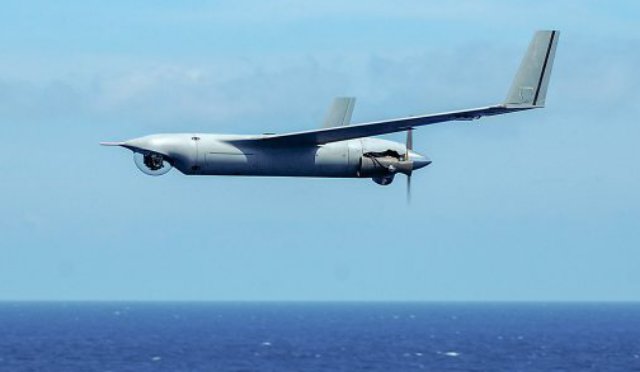A pair of UAS are expected to take to the skies over the U.S. Arctic Ocean this summer, conducting work for the oil industry. Operating the remote controls will be private companies, including ConocoPhillips, Alaska’s largest oil producer and holder of oil leases in the remote Chukchi Sea off the state’s northwest coast.
In recent years, UAS have buzzed over Alaska to monitor oil pipelines, sea lion migrations and meandering ice floes. But only manufacturers testing the technology or public entities, such as the University of Alaska Fairbanks, have been allowed to legally operate them here and elsewhere in the U.S.
Federal Aviation Administration officials said the recent commercial certification of the two aircraft — a ScanEagle and a PUMA — allows them to be operated only above Arctic waters and only by companies that have received FAA approval.
In 2012, Congress established three regions in the Arctic — the Bering Strait, portions of the Bering Sea and the Arctic Ocean — as test grounds for commercial UAS use. U.S. Sen. Mark Begich wrote the amendment to boost research and development as well as job opportunities in Alaska.
The Arctic is a good place to do that because air traffic is limited, said FAA spokesman Les Dorr. “This is a stepping stone,” said Dorr of the Alaska certificates. “We are encouraging safe integration, but it has to be done in a way that will not post hazards to manned aircraft and people and property on the ground.”
It appears the ScanEagle, manufactured by Boeing-owned Insitu Inc. of Bergin, Wash., will be the nation’s first commercially operated UAS. Insitu has an agreement with ConocoPhillips for the operation of the ScanEagle, officials with the companies confirmed.
ConocoPhillips is waiting for the arrival of a research ship in the Arctic before the ScanEagle can be launched above the Chukchi Sea, an FAA official said. The Houston-based oil giant holds 98 oil and gas leases in those waters, the same region where Royal Dutch Shell hopes to discover a massive pool of undersea oil.
Federal geologists estimate the area contains 12 billion barrels of recoverable oil, but exploration efforts have been put on hold this summer and possibly next, too. The work has been confounded by a number of factors, including brutal weather conditions and a massive ice floe that forced Shell’s drilling rig to temporarily stop exploration.
The ScanEagle will allow Conoco to track such ice movement in the Chukchi, the FAA said. It will also be used to assess whale and other marine mammal migrations.
Amy Burnett, a Conoco spokeswoman in Alaska, confirmed that Conoco has been working with the FAA on “regulatory and safety aspects of this technology. We are in the final stages of evaluating how we can use the Unmanned Aircraft System (UAS) within our operations and will likely be able to share more later this summer,” she said.
As for the PUMA, it is expected to be flown over the Beaufort Sea, located off the coast of northeast Alaska, to support “emergency response crews for oil spill monitoring and wildlife surveillance over the Beaufort Sea,” the FAA said.
Its manufacturer, AeroVironment of Monroe, Calif., has no commercial operator lined up to use it, so it’s not yet known when the PUMA will be in civilian service, an FAA official said.
Source: Alaska Despatch


I am sorry for the Americans but the real first civil flights took place in june 2004 over Amsterdam! Israeli IAI in conjunction with Dutch Condor UAS performed an hours flight over the centre over Amsterdam under auspicien of the Amsterdam Police. Responsible organizer was the undersigned. Who repeated Civil flights over cities again with his company Albatros UAS bv on 26th February 2012 over Eindhoven in the South of the Netherlands (crowd control, three hours continuos Flight!) and again on 30th april over Eindhoven 2012, with two flights, one of two and the other of nearly four hours. Again over the city center as crowd control tool. These flights were performed with the Aerovironment Orbiter 2b system, which was performing very well. After these flights many experimental flights were performed, like one over sea for search and rescue (!).Regretably in the bad European economy Albatros UAS went bankrupt.